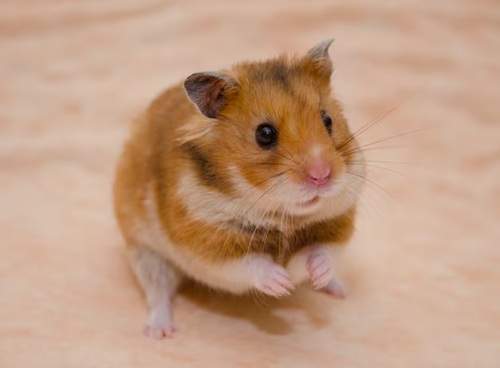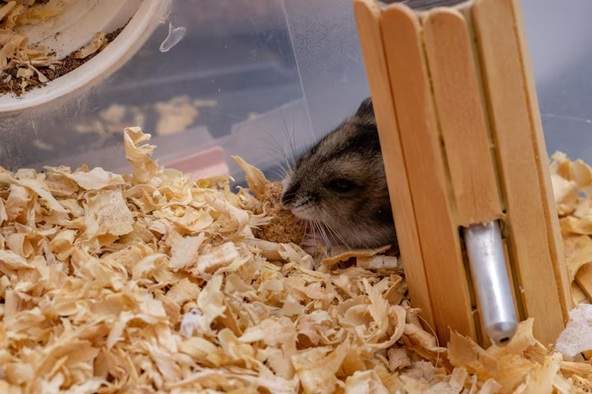Choosing a new pet is a big decision, filled with excitement and questions. Here at Dreamy Mammals, we’re dedicated to helping you make the most informed choice. Today, we’re diving deep into the world of one of the tiniest, most energetic companions: the hamster. Are they the perfect fit for your home? Let’s explore the ins and outs, uncovering why these small creatures can be delightful pets, as well as the realities of caring for them.
Hamsters – More Than a Good Pet!
Hamsters come with several characteristics. Understanding these should be the right step in helping you find if you are comfortable keeping them.

- They are night owls – Hamsters are primarily active during dusk and dawn, and throughout the night. This means they’ll be scurrying, burrowing, and running on their wheel when you’re likely trying to sleep
- They love living alone – Most hamsters are solo dwellers. Housing multiple hamsters together, especially Syrians, can lead to serious fights, injury, and even death.
- They have a Brief life – Hamsters can only live up to 2 to 3 years. Syrians might reach 3 years, and dwarf hamsters often live 1-2 years.
- Fragile Nature & Biting –They are quite small and fragile. You may need to take extra care in handling them. Moreover, they can bite until they get used to your touch.
Also learn why hamsters eat their babies.
Why Keeping Hamsters a Good Option?
Well, being dreamy about mammals and other pets, we at Dreamy Mammals to be excellent pet. Of course, there are several negative aspects to keeping them as pets, but we also found a few benefits of having hamsters as a pet.

Here are a few reasons that make hamsters a good pet in your home –
- Highly low maintenance – Compared to dogs or cats, hamsters require less direct daily interaction and no outdoor walks. Their primary needs revolve around a clean habitat, fresh food and water, and enrichment.
- Space saving pets – For those with limited living space, a hamster’s compact size is a major draw. While they need a surprisingly large cage (more on this below!), their overall footprint is minimal.
- Enertaining and quiet to watch – Observing their natural behaviours – burrowing intricate tunnels, stuffing their cheek pouches with food, and zipping around their habitat – can be incredibly amusing and fascinating.
- Affordable to buy and keep – The initial purchase of a hamster is typically low, and recurring costs for food, bedding, and chew toys are generally affordable compared to larger pets. Remember to budget for potential vet visits, though, as exotic pet vets can be more specialised and costly.
The Downsides of Keeping a Hamster
Even when they may be cute, there are several downsides of keeping a hamster as a pet.
- They are not cuddly – These pets are not the cuddle babies as you would expect them to be. You should be ready for strong bites.
- Escape artists – Hamsters are incredibly adept at finding weaknesses in their enclosures. A secure cage is paramount to prevent escapes.
- Hygiene and odor – A build-up of urine can create a strong ammonia smell. Daily spot cleaning of soiled bedding and a weekly full cage clean are essential.
- Health concerns – Hamsters are susceptible to various health issues, including “wet tail” (diarrhea), respiratory infections, skin problems (mites, ringworm, abscesses), and overgrown teeth.
- Nocturnal: Most active at night.
- Solitary: Generally prefer to live alone.
- Short Lifespan: Typically 2-3 years.
- Fragile & Skittish: Require gentle handling.
- Constant Chewers: Need chew toys for dental health.
How to Care for Hamsters?
Well, it should be up to you to decide whether you want to choose a hamster to keep as a pet. If you’ve decided a hamster is right for you, here’s how to provide them with a happy, healthy life.
Use a spacious cage
Even when a hamster is a small pet, they need a lot of space to live. That should make it obvious to choose a bigger cage. Consider a large aquarium (40-gallon breeder minimum for a Syrian). You may also consider a properly adapted plastic bin cage, or a high-quality modular cage with solid floor levels. You may also consider bin cages, multi-level modular cages and similar options.
Deep bedding
Hamsters are natural borrowers. Make sure to provide enough bedding for the purpose. Dreamy Mammals recommends 6-10 inches of paper-based bedding (like CareFresh) or aspen shavings. Do not use cedar or pine shavings due to their strong phenols which can cause respiratory issues.
Exercise wheel
Provide a good and large exercise wheel. A Syrian hamster needs a 10-12 inch wheel, while dwarf hamsters need 6.5-8 inches. A wheel that is too small can cause spinal problems.
Balanced diet
Use a high-quality commercial hamster food mix (pellets and seeds/grains) that should form the basis of their diet. Protein sources like a small piece of cooked chicken or a mealworm can be offered occasionally. Never forget to keep enough fresh water at all times. Check out the options for fresh veggies and fruits. Go with small amounts. Avoid seeds or pits.
The Verdict
So, is a hamster good for you? The correct answer depends on several factors. We at Dreamy Mammals, we believe that there are several aspects that would decide whether you can keep hamsters as pets at home.
- Low Maintenance: Less demanding than many other pets.
- Space-Saving: Ideal for smaller homes.
- Quiet & Entertaining: Great for observation.
- Affordable: Lower initial and ongoing costs.
- Educational: Can teach responsibility to older children.
Hamsters, while small, deserve the same level of care, understanding, and respect as any other beloved animal. By thoroughly researching their needs and honestly assessing your ability to meet them, you can determine if a hamster will truly be a dreamy addition to your home.




Add Comment